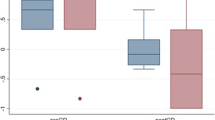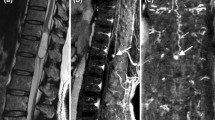Abstract
Magnetic resonance imaging (MRI) in small animal practice is largely based on classic two-dimensional spin-echo, inversion recovery and gradient-echo sequences which are largely limited by low spatial resolution, especially in low-field (LF)-MRI scanners. Nowadays, however, the availability of volumetric sequences can open new perspectives and enhance the diagnostic potential of this imaging modality. Balanced steady-state free precession (bSSFP) is a three-dimensional gradient-echo sequence in which image contrast is given by the ratio of T2 and T1, resulting in low soft-tissue signal, poor cerebral grey/white matter distinction and a bright signal from free fluid and fat. Such properties, along with a high signal-to-noise ratio and a very high spatial resolution deriving from acquisition of contiguous blocks of data, make this sequence perfectly suited for morphologic imaging, particularly for fluid-containing structures. Although bSSFP is widely adopted in human medical imaging, the use of this sequence in veterinary radiology is limited to anatomic studies of the inner ear and quadrigeminal cistern. This review aims to discuss the technical background of the bSSFP sequence and its possible advantageous applications in small animal LF-MRI for different specific disorders of the spine (arachnoid diverticula, small disc herniation, facet joint synovial cysts), brain (supracollicular fluid accumulation, traumatic injuries) and ligaments (complete and partial tears).



















Similar content being viewed by others
Notes
ESAOTE VET-MR GRANDE, Esaote, Genoa, Italy.
OsiriX DICOM-viewer: Pixmeo, Geneva, Switzerland.
Abbreviations
- 2D:
-
Two-dimensional
- 3D:
-
Three-dimensional
- bSSFP:
-
Balanced steady-state free precession
- CrCL:
-
Cranial cruciate ligament
- CSF:
-
Cerebrospinal fluid
- FA:
-
Flip angle
- FID:
-
Free induction decay
- FLAIR:
-
Fluid attenuated Inversion recovery
- FOV:
-
Field of view
- GE:
-
Gradient-echo
- IR:
-
Inversion recovery
- LF-MRI:
-
Low-field Magnetic Resonance imaging
- LM:
-
Longitudinal magnetization
- MDCT:
-
Multidetector computed tomography
- MPR:
-
Multiplanar reformatting
- MRI:
-
Magnetic Resonance imaging
- NEX:
-
Number of executions
- PD:
-
Proton density
- QC:
-
Quadrigeminal cistern
- RF:
-
Radio-frequency
- SADs:
-
Spinal arachnoid diverticula
- SE:
-
Spin-echo
- SFA:
-
Supracollicular fluid accumulation
- SNR:
-
Signal-to-noise ratio
- TE:
-
Echo time
- TM:
-
Transverse magnetization
- TR:
-
Repetition time
- VR:
-
Volume rendering
References
Adams CM, Wilson TD (2011) Virtual cerebral ventricular system: an MR-based three-dimensional computer model. Anat Sci Educ 4(6):340–347. https://doi.org/10.1002/ase.256
Barrett E, Barr F, Owen M et al (2009) A retrospective study of the MRI findings in 18 dogs with stifle injuries. J Small Anim Pract 50(9):448 – 55. https://doi.org/10.1111/j.1748-5827.2009.00822.x
Bertolini G, Ricciardi M, Caldin M (2016) Multidetector computed tomographic and low-field magnetic resonance imaging anatomy of the quadrigeminal cistern and characterization of supracollicular fluid accumulations in dogs. Vet Radiol Ultrasound 57(3):259–268. https://doi.org/10.1111/vru.12347
Blink EJ (2010) Basic mri: Physics. http://www.mri-physics.net/bin. p 65. Accessed 10 January 2017
Blond L, Thrall DE, Roe SC et al (2008) Diagnostic accuracy of magnetic resonance imaging for meniscal tears in dogs affected with naturally occuring cranial cruciate ligament rupture. Vet Radiol Ultrasound 49(5):425–431
Chavhan GB, Babyn PS, Jankharia BG et al (2008) Steady-state MR imaging sequences: physics, classification, and clinical applications. Radiographics 28(4):1147–1160. https://doi.org/10.1148/rg.284075031
Dennis R (2011) Optimal magnetic resonance imaging of the spine. Vet Radiol Ultrasound 52(1 Suppl 1):S72–S80. https://doi.org/10.1111/j.1740-8261.2010.01787.x
Dickinson PJ, Sturges BK, Berry WL et al (2001) Extradural spinal synovial cysts in nine dogs. J Small Anim Pract 42(10):502–509
Elster AD (1993) Gradient echo imaging: techniques and acronyms. Radiology 186(1):1–8. https://doi.org/10.1148/radiology.186.1.8416546
Evans E, de Lahunta A (2013) Miller’s Anatomy of the Dog, 4th edn. Elsevier, Philadelphia, PA, pp 607–608
Finn JP, Nael K, Deshpande V et al (2006) Cardiac MR Imaging: State of the Technology. Radiology 241(2):338–354. https://doi.org/10.1148/radiol.2412041866
Freer SR, Scrivani PV (2008) Postoperative susceptibility artefact during magnetic resonance imaging of the vertebral column in two dogs and a cat. Vet Radiol Ultrasound 49(1):30–34
Gilbert FJ, Redpath TW (2006) Magnetic resonance imaging. In: Webster NR, Galley HF (eds) Anaesthesia Science, 1st edn. Blackwell Publishing Ltd., Oxford, p 382
Gonzalo Domínguez M, Hernández C, Ruisoto P et al (2016) Morphological and Volumetric Assessment of Cerebral Ventricular System with 3D Slicer Software. J Med Syst 40(6):154. https://doi.org/10.1007/s10916-016-0510-9
Grondin G, Sianothai A, Olry R (2000) In Situ Ventricular Casts of S10 Plastinated Human Brains. J Int Soc Plastination 15(1):18–21
Hahn EL (1950) Spin echoes. Phys Rev 89:580–594
Hashemi RH, Bradley WG, Lisanti CJ (2010) MRI: The Basics. Lippincott Williams & Wilkins, Philadelphia, p p244
Hatipoğlu HG, Durakoğlugil T, Ciliz D et al (2007) Comparison of FSE T2W and 3D FIESTA sequences in the evaluation of posterior fossa cranial nerves with MR cisternography. Diagn Interv Radiol 13(2):56–60
Hodgson RJ, O’Connor PJ, Grainger AJ (2012) Tendon and ligament imaging. Br J Radiol 85(1016):1157–1172. https://doi.org/10.1259/bjr/34786470
Huang TY, Huang IJ, Chen CY et al (2002) Are TrueFISP images T2/T1-weighted? Magn Reson Med 48(4):684–688. https://doi.org/10.1002/mrm.10260
Kneissl S, Probst A, Konar M (2004) Low-field magnetic resonance imaging of the canine middle and inner ear. Vet Radiol Ultrasound 45(6):520–522
Konar M, Lang J (2011) Pros and cons of low-field magnetic resonance imaging in veterinary practice. Vet radiol ultrasound 52(1 Suppl 1):S5-S14. https://doi.org/10.1111/j.1740-8261.2010.01780.x
Lee J, Lustig M, Kim DH et al (2009) Improved shim method based on the minimization of the maximum off-resonance frequency for balanced SSFP. Magn Reson Med 61(6):1500–1506. https://doi.org/10.1002/mrm.21800
Levitski RE, Chauvet AE, Lipsitz D (1999) Cervical Myelopathy Associated with Extradural Synovial Cysts in 4 Dogs. J Vet Intern Med 13(3):181–186
Lufler RS, Zumwalt AC, Romney CA et al (2010) Incorporating radiology into medical gross anatomy: does the use of cadaver CT scans improve students’ academic performance in anatomy? Anat Sci Educ 3(2):56–63. https://doi.org/10.1002/ase.141
Mauler DA, De Decker S, De Risio L et al (2014) Signalment, clinical presentation, and diagnostic findings in 122 dogs with spinal arachnoid diverticula. J Vet Intern Med 28(1):175 – 81. https://doi.org/10.1111/jvim.12241
Mink JH, Levy T, Crues JV 3rd (1988) Tears of the anterior cruciate ligament and menisci of the knee: MR imaging evaluation. Radiology 167(3):769 – 74. https://doi.org/10.1148/radiology.167.3.3363138
Miyakoshi A, Maravilla KR (2010) Diagnostic imaging of pain. In: Fishman SM, Ballantyne JC, Rathmell JP (ed) Bonica’s management of pain, 4th edn. Lippincott Williams & Wilkins, Philadelphia, p. 240
Nayak KS, Hargreaves BA, Hu BS et al (2005) Spiral balanced steady-state free precession cardiac imaging. Magn Reson Med 53(6):1468–1473. https://doi.org/10.1002/mrm.20489
Park HJ, Lee SY, Chung EC et al (2014) The usefulness of the oblique coronal plane in knee MRI on the evaluation of the posterior cruciate ligament. Acta Radiol 55(8):961–968. https://doi.org/10.1177/0284185113508180
Petersson H, Sinkvist D, Wang C et al (2009) Web-based interactive 3D visualization as a tool for improved anatomy learning. Anat Sci Educ 2(2):61 – 8. https://doi.org/10.1002/ase.76
Reich DS, Hammoud DA (2009) Neuroimaging of the cerebrospinal fluid compartment. Cerebrospinal Fluid in Clinical Practice. Saunders Elsevier, Philadelphia, p 63 ). Irani D.N
Ricciardi M (2016) Usefulness of multidetector computed tomography in the evaluation of spinal neuro-musculoskeletal injuries. Vet Comp Orthop Traumatol 29(1):1–13. https://doi.org/10.3415/VCOT-15-05-0082
Robertson I (2011) Optimal magnetic resonance imaging of the brain. Vet Radiol Ultrasound 52(1 Suppl 1):S15–S22. https://doi.org/10.1111/j.1740-8261.2010.01781.x
Rooney WD, Johnson G, Li X et al (2007) Magnetic field and tissue dependencies of human brain longitudinal 1H2O relaxation in vivo. Magn Reson Med 57(2):308–318. https://doi.org/10.1002/mrm.21122
Sale CS, Smith KC (2007) Extradural spinal juxtafacet (synovial) cysts in three dogs. J Small Anim Pract 48(2):116–119. https://doi.org/10.1111/j.1748-5827.2006.00205.x
Saremi F, Grizzard JD, Kim RJ (2008) Optimizing cardiac MR imaging: practical remedies for artifacts. Radiographics 28(4):1161–1187. https://doi.org/10.1148/rg.284065718
Scheffler K (1999) A Pictorial Description of Steady-States in Rapid Magnetic Resonance Imaging. Concepts Magn Reson 11(5):291–304
Scheffler K (2003) On the transient phase of balanced SSFP sequences. Magn Reson Med 49(4):781–783. https://doi.org/10.1002/mrm.10421
Scheffler K, Lehnhardt S (2003) Principles and applications of balanced SSFP techniques. Eur Radiol 13(11):2409–2418. https://doi.org/10.1007/s00330-003-1957-x
Strub CG, Frederick LG (1989) The Principles and Practice of Embalming, 5th edn. Professional Training Schools, Inc., Dallas, TX
Tam MD (2010) Building virtual models by postprocessing radiology images: A guide for anatomy faculty. Anat Sci Educ 3(5):261–266. https://doi.org/10.1002/ase.175
Trelease RB, Rosset A (2008) Transforming clinical imaging data for virtual reality learning objects. Anat Sci Educ 1(2):50 – 5. https://doi.org/10.1002/ase.13
VanDyke CW, Modic MT, Beale SM et al (1992) 3D MR myelography. J Comput Assist Tomogr 16(3):497–500
Westbrook C, Roth CK, Talbot J (2011) MRI in Practice, pp 106, 4th edn. Blackwell Science Ltd., West Sussex, 114, 167–168
Wu ML, Ko CW, Chen TY et al (2005) MR Ventriculocisternography By Using 3D Balanced Steady-State Free Precession Imaging: Technical Note. AJNR Am J Neuroradiol 26(5):1170–1173
Yoshikawa T, Hayashi N, Yamamoto S et al (2006) Brachial Plexus Injury: Clinical Manifestations, Conventional Imaging Findings, and the Latest Imaging Techniques. Radiographics 26(Suppl 1):S133–S143. https://doi.org/10.1148/rg.26si065511
Zisch RJ, Hollenbach HP, Artmann W (1992) Lumbar myelography with three-dimensional MR imaging. J Magn Reson Imaging 2(6):731–734
Acknowledgements
The author wishes to thank the staff of the Pingry Veterinary Hospital of Bari (Italy) for their assistance with data collection.
Author information
Authors and Affiliations
Corresponding author
Ethics declarations
Conflict of interest
None declared.
Rights and permissions
About this article
Cite this article
Ricciardi, M. Principles and applications of the balanced steady-state free precession sequence in small animal low-field MRI. Vet Res Commun 42, 65–86 (2018). https://doi.org/10.1007/s11259-017-9708-7
Received:
Accepted:
Published:
Issue Date:
DOI: https://doi.org/10.1007/s11259-017-9708-7




